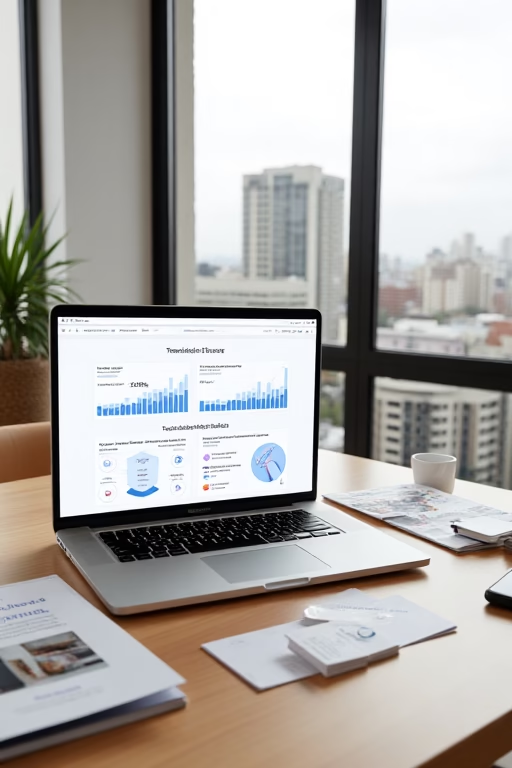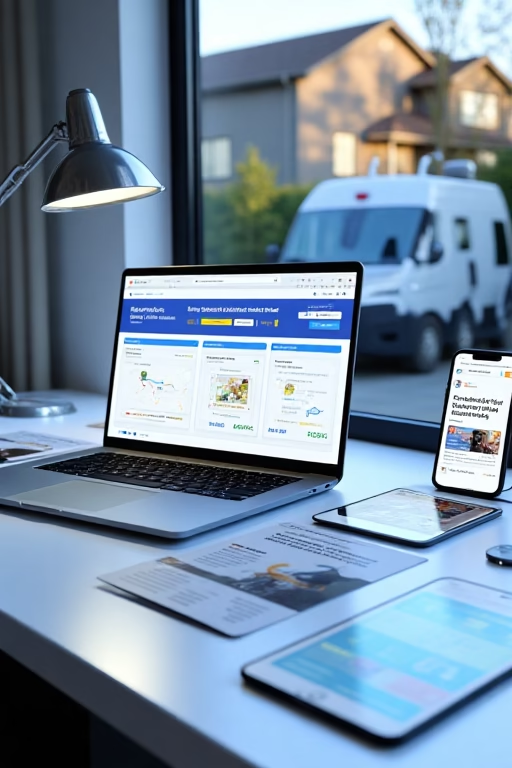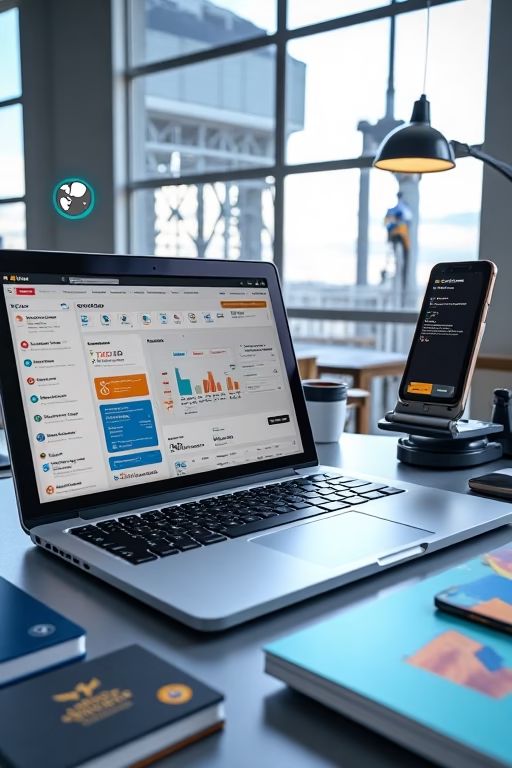How to Sell More Roofing Services: Storm Damage and Insurance Claim Marketing
How to Sell More Roofing Services: Storm Damage and Insurance Claim Marketing
Accelerate Your Post-Storm Leads with Market Wiz
Table of Contents
- Introduction: Roofing After the Storm
- 1. Understanding Your Market
- 1.1 Homeowners Facing Roof Damage
- 1.2 Commercial & Multifamily Properties
- 1.3 Insurance Adjusters & Claimants
- 2. Crafting a Storm-Ready Value Proposition
- 3. Lead Capture & Digital Funnels
- 3.1 SEO for Storm Damage Roofing
- 3.2 Google Ads & Insurance Keywords
- 3.3 High-Converting Landing Pages
- 4. Content Marketing & Education
- 4.1 Blog Posts & Storm Prep Guides
- 4.2 Video Case Studies & Testimonials
- 4.3 Insurance Claim Checklists
- 5. Local SEO & Reputation Management
- 5.1 Google Business Profile Optimization
- 5.2 Local Citations & Reviews
- 5.3 Map Pack Visibility
- 6. Strategic Partnerships & Referrals
- 6.1 Insurance Adjuster Alliances
- 6.2 Restoration & Construction Firms
- 6.3 Real Estate Agents
- 7. Community Outreach & Event Marketing
- 8. CRM & Automated Follow-Up
- 9. Analytics & Continuous Optimization
- Conclusion & Next Steps
- 25 FAQs
- 25 Extra Keywords
Introduction: Roofing After the Storm
Severe weather triggers urgent roofing needs. Homeowners scramble for reliable contractors while insurance claims flood the market. To capture this surge, you must speak directly to storm-hit audiences and streamline the claim process. This guide from Market Wiz shows you how to turn post-storm chaos into a predictable flow of high-value roofing projects.
1. Understanding Your Market
1.1 Homeowners Facing Roof Damage
These customers seek immediate relief: tarping, temporary repairs, and fast estimates. Emphasize 24/7 availability and storm-certified workmanship.
1.2 Commercial & Multifamily Properties
Property managers require minimal downtime, detailed project timelines, and direct billing to insurance. Highlight your experience with large-scale claims and compliance protocols.
1.3 Insurance Adjusters & Claimants
Adjusters look for clear documentation and professional reports. Equip your team with standardized inspection forms, aerial drone imagery, and line-item estimates to win their trust.
2. Crafting a Storm-Ready Value Proposition
Your messaging must revolve around speed, reliability, and insurance expertise. A compelling value prop might read: “Rapid Response Roofing—Claim-Certified, 24/7 Storm Coverage, Direct Billing” to immediately address customer pain points.
3. Lead Capture & Digital Funnels
3.1 SEO for Storm Damage Roofing
- Target long-tail search terms: “hail damage roof repair,” “wind damage roofing near me.”
- Publish location-based storm recovery pages after events.
3.2 Google Ads & Insurance Keywords
Bid on high-intent queries like “file roof claim” and use ad extensions to showcase “Free Insurance Estimate.”
3.3 High-Converting Landing Pages
Design storm-specific pages with prominent CTAs (“Get Your Claim Estimate”) and trust badges (certifications, reviews) above the fold.
4. Content Marketing & Education
4.1 Blog Posts & Storm Prep Guides
Write actionable guides: “What to Do After Hail Damage” or “Roof Tarping Explained,” capturing leads via downloadable PDF checklists.
4.2 Video Case Studies & Testimonials
Show real homeowners describing fast response and seamless claim handling. Embed short clips on social and landing pages for authenticity.
4.3 Insurance Claim Checklists
Offer a step-by-step insurance guide: documenting damage, filing claims, and understanding adjuster reports—position yourself as the expert partner.
5. Local SEO & Reputation Management
5.1 Google Business Profile Optimization
- Update service areas after storms and add “Storm & Insurance Claims” category.
- Post photos of storm projects and customer shout-outs to keep your profile fresh.
5.2 Local Citations & Reviews
Ensure NAP consistency on directories like HomeAdvisor, Yelp, and local business groups. Automate review requests post-job to build rapid credibility.
5.3 Map Pack Visibility
Encourage satisfied clients to leave full reviews, boosting your rank in the coveted map pack for “roof repair near me.”
6. Strategic Partnerships & Referrals
6.1 Insurance Adjuster Alliances
Develop referral agreements: provide adjusters with fast, detailed reports and in turn receive their client leads directly.
6.2 Restoration & Construction Firms
Collaborate with water damage and general contracting companies to bundle post-storm services and cross-refer clients.
6.3 Real Estate Agents
Offer pre-listing roof inspections and repairs; agents refer clients who need a secure roof before selling or financing.
7. Community Outreach & Event Marketing
Host “Storm Safety Clinics” in local community centers, teaching homeowners how to spot damage and file claims. Collect contact info for follow-up roof inspections.
8. CRM & Automated Follow-Up
- Use a CRM to tag leads by storm event and claim status.
- Automate follow-up emails: immediate confirmation, claim reminders, seasonal inspections.
- Segment by geography and severity to personalize outreach after each weather event.
9. Analytics & Continuous Optimization
- Track lead volume by channel, cost-per-claim lead, and close rates.
- A/B test headlines (“Free Roof Inspection” vs “Insurance Claim Estimate”).
- Review monthly to reallocate budgets toward top-performing tactics.
Conclusion & Next Steps
Storm damage and insurance claims present a unique opportunity for roofing contractors to generate premium leads. By combining targeted SEO, claim-optimized content, adjuster partnerships, and robust follow-up automation, you’ll convert urgent needs into long-term customer relationships. Start today by auditing your storm-focused landing pages and reaching out to local adjusters for referral discussions.
25 Frequently Asked Questions
1. How soon after a storm should I market roofing services?
Within 24–48 hours—storm surge interest peaks immediately after severe weather.
2. What keywords drive storm damage leads?
“Hail roof repair,” “wind damage roofing,” “insurance roof claim estimate.”
3. How do I partner with insurance adjusters?
Offer free, detailed inspection reports and fast turnaround to earn their trust and referrals.
4. Should I offer free inspections?
Yes—“No-obligation storm inspection” entices homeowners to engage and share claim details.
5. How to handle high call volume?
Use call-tracking software and temporary call centers to manage spikes after storms.
6. What CMS works best for landing pages?
WordPress with Elementor or Leadpages for rapid storm page deployment and A/B testing.
7. How do I get more Google reviews?
Automate SMS requests post-job and offer a small discount on future services for completed reviews.
8. Should I run paid ads immediately after storms?
Yes—budget may increase due to competition, but lead quality and conversion rates justify it.
9. What’s a good CTA for storm pages?
“Book Your Free 15-Minute Storm Inspection” emphasizes speed and no cost.
10. How to optimize for mobile?
Use click-to-call buttons, condensed forms, and fast-loading images under 200 KB.
11. Can I use drones for inspections?
Yes—drone imagery impresses adjusters and provides precise documentation for claims.
12. How to price storm repairs?
Provide industry-standard line-item estimates; apply adjuster-approved pricing and materials lists.
13. What license is required?
A roofing contractor license per your state’s requirements; display it prominently.
14. How to follow up on unclosed leads?
Use email/SMS reminders and limited-time promotions to re-engage leads within 7 days.
15. Are door hangers effective post-storm?
Yes—target neighborhoods hit hardest, with “storm safety check” offers and tear-off claim cards.
16. How to handle insurance denials?
Offer second-opinion inspections and documentation support to help homeowners appeal decisions.
17. How often update storm pages?
After each major weather event—refresh with new photos and local testimonials.
18. Should I bundle maintenance?
Yes—offer a “storm season protection plan” that includes roof inspections and minor repairs.
19. How to measure ROI?
Track cost-per-lead, cost-per-closed job, and average job value from storm campaigns.
20. What follow-up cadence works best?
Within 1 hour of inquiry, then 1 day, 3 days, and 7 days with tailored messaging.
21. Can I advertise on Facebook locally?
Yes—use geo-targeted ads around zip codes severely impacted by recent storms.
22. Is retargeting worthwhile?
Absolutely—serve ads to visitors who viewed your storm pages but didn’t convert.
23. How to build trust quickly?
Show real before/after photos, customer testimonials, and industry certifications above the fold.
24. What’s the best time to post social updates?
Immediately after storms and again 24 hours later, when homeowners research options.
25. First step to implement?
Create a storm-specific landing page, publish a claim checklist, and launch a small PPC test campaign within 48 hours.
25 Extra Keywords
- storm damage roof repair
- hail damage roofing estimate
- insurance roof claim process
- 24/7 emergency roofing
- wind damaged shingles
- tarpaulin roof cover
- roofing adjuster partnership
- roof inspection checklist
- drone roof inspection
- local roofing SEO
- roof replacement financing
- roof leak insurance claim
- storm repair landing page
- roofing PPC campaign
- roof contractor reviews
- roof maintenance plan
- insurance billing direct
- roof claim audit
- pre-storm roof prep
- post-storm outreach
- roof damage testimonials
- roofing community events
- adjuster referral program
- emergency tarp service
- Market Wiz roofing guide
How to Sell More Roofing Services: Storm Damage and Insurance Claim Marketing Read More »







